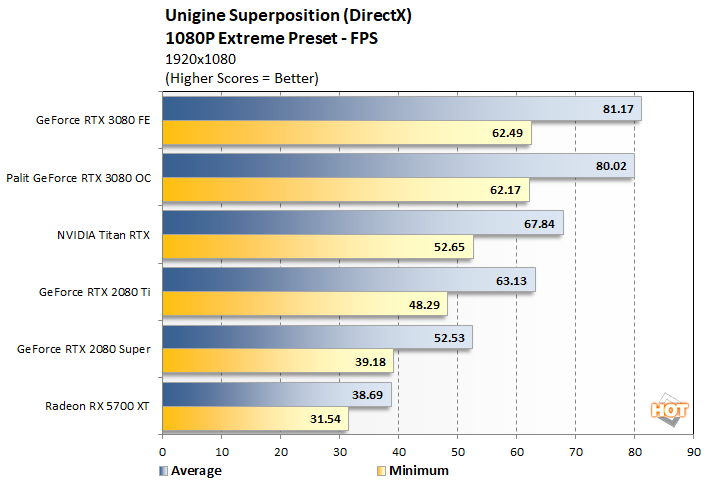Palit GeForce RTX 3080 GamingPro OC Review: Big, Custom Ampere
Palit GeForce RTX 3080 GamingPro OC: Setup, 3DMark And Unigine Tests
How We Configured Our Test Systems: We tested the graphics cards featured in this article on an ASUS Prime X299 Deluxe motherboard powered by a Core i9-10980XE 18-core / 36-thread processor and 32GB of HyperX DDR4 RAM clocked at 2,933MHz. The first thing we did when configuring the test system was enter the UEFI and set all values to their "high performance" defaults, then we disabled any integrated peripherals that wouldn't be put to use. The memory's clock was dialed in to its optimal performance settings using its XMP profile and the solid state drive was then formatted and Windows 10 Professional x64 was installed and fully updated. When the Windows installation was complete, we installed all of the drivers, games, applications and benchmark tools necessary to complete our tests.
|
|
|
| Hardware Used: Intel Core i9-10980XE (3GHz - 4.4GHz, 18-Core) ASUS X299 Prime (Intel X299 Chipset) 32GB Corsair DDR4-2933 Samsung SSD 970 EVO Integrated Audio Integrated Network Palit GeForce RTX 3080 GamingPro OC NVIDIA GeForce RTX 3080 FE NVIDIA Titan RTX NVIDIA GeForce RTX 2080 Ti FE NVIDIA GeForce RTX 2080 Super AMD Radeon RX 5700 XT |
Relevant Software: Windows 10 Pro x64 (v2004) AMD Radeon Software v20.8.3 NVIDIA GeForce Drivers v456.16 Benchmarks Used: IndigoBench v4 LuxMark v4_alpha0 SiSoft SANDRA 2020 VRMark 3DMark (Time Spy, Fire Strike, Port Royal) Unigine Superposition Crytek Neon Noir Metro Exodus Red Dead Redemption 2 Gears Tactics Wolfenstein: Youngblood FarCry: New Dawn |
|
|
|
Although it technically has a higher, peak boost clock, the Palit GeForce RTX 3080 GamingPro OC came in just a notch behind the NVIDIA Founder's Edition in Unigine Superposition's 1080P Extreme test. Both RTX 3080's, however, blew past all of the other cards to finish at the top of the charts.
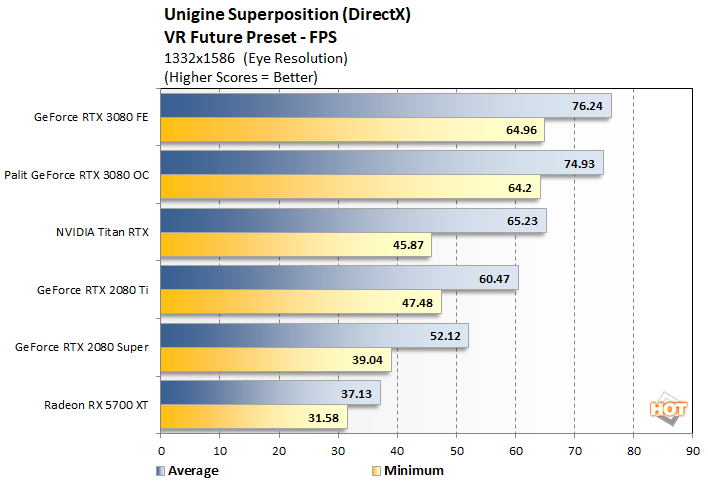
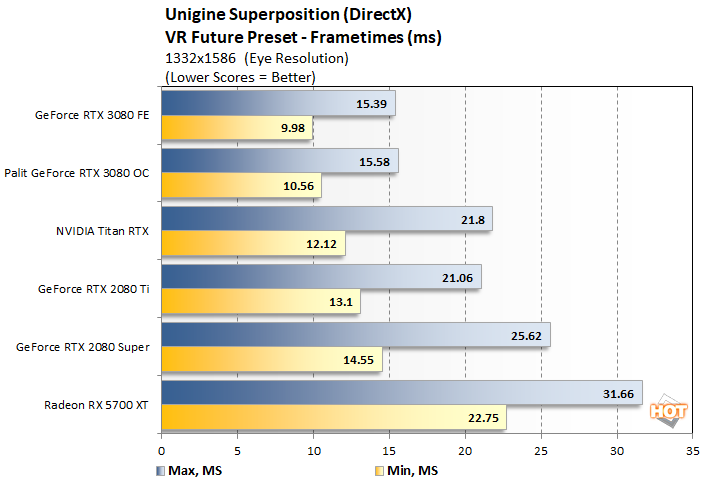
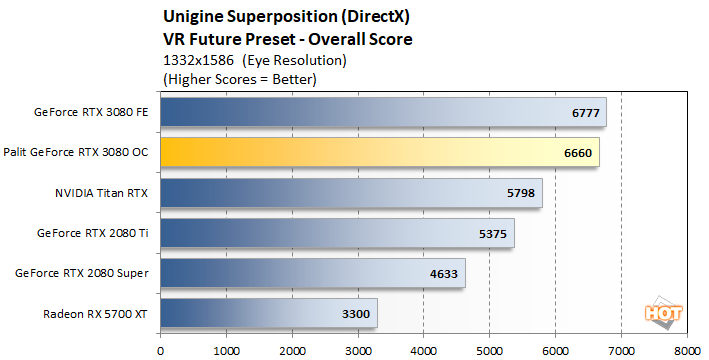
Superposition's VR Future test followed a similar performance trend, with the Palit GeForce RTX 3080 GamingPro OC finishing just a notch behind NVIDIA's Founder's Edition card, but well out in front of everything else we tested.
|

Futuremark VRMark
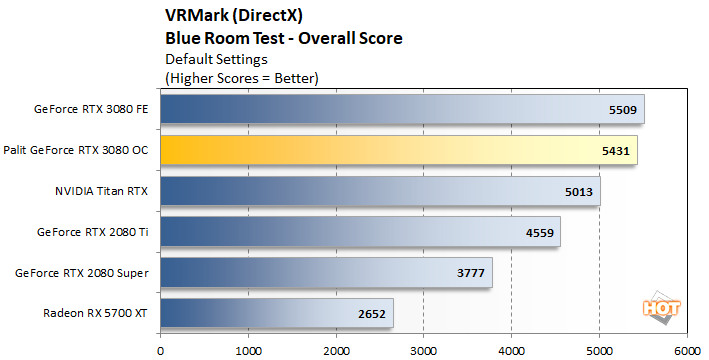
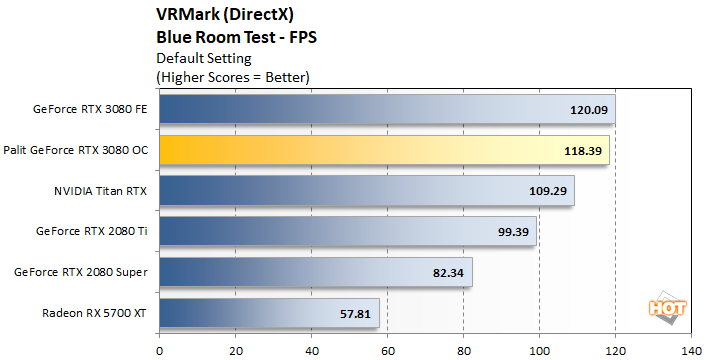
In VR Mark, the Palit GeForce RTX 3080 GamingPro OC once again just missed the mark set by the GeForce RTX 3080 Founder's Edition. The delta separating the cards is tiny though, and would be imperceptible in real-world use.
|

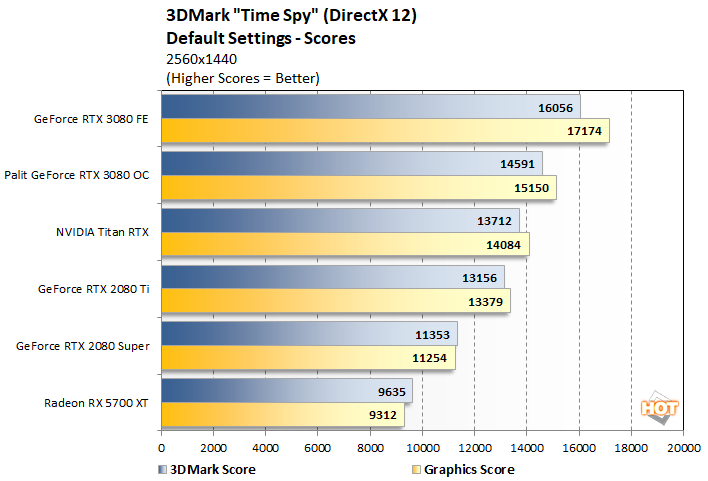
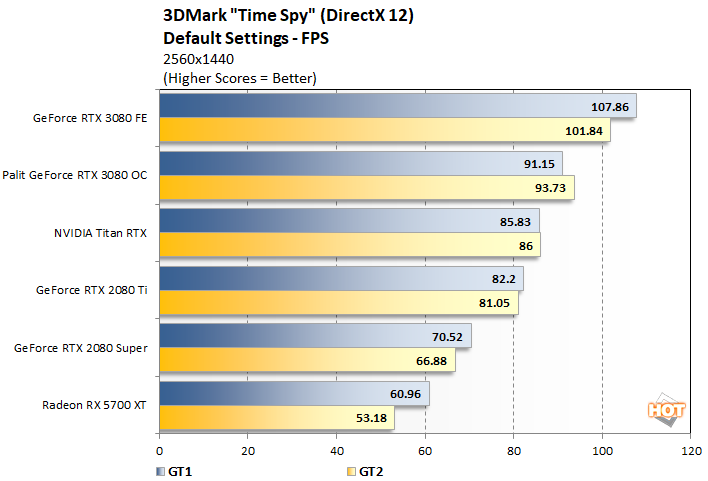
|
|
|
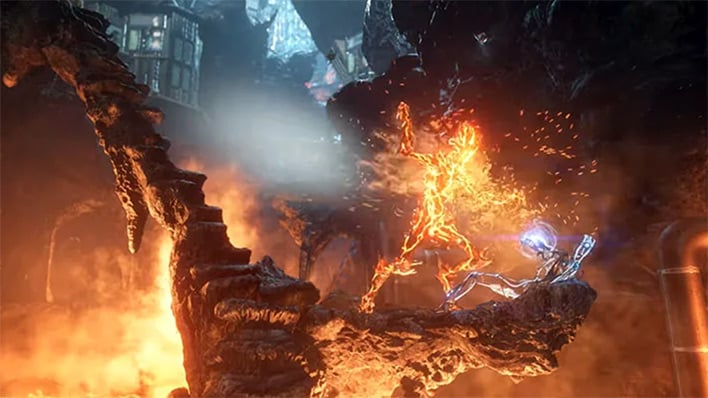
3DMark Fire Strike
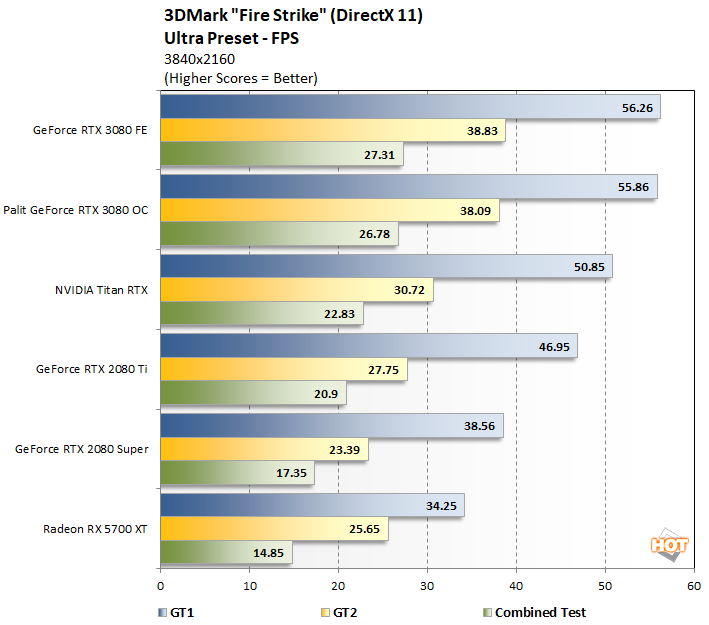
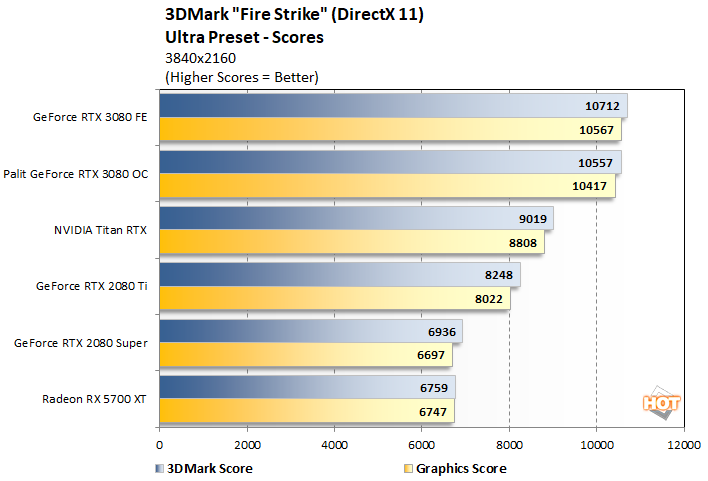
Our results in the DX11-based Fire Strike benchmark once again have the Palit GeForce RTX 3080 GamingPro OC and NVIDIA Founder's Edition card finishing right on top of each other, well ahead of all of the other cards we tested.
|
Port Royal was released earlier this year as an update to UL’s popular 3DMark suite. It is designed to test real-time ray tracing performance of graphics cards that support Microsoft DirectX Raytracing, or DXR. Although DXR is technically compatible with all DX12-class GPUs, the graphics card must have drivers that enable DXR, and NVIDIA is the only company to have done so at this point, hence the lack of Radeons in the chart.

3DMark Port Royal
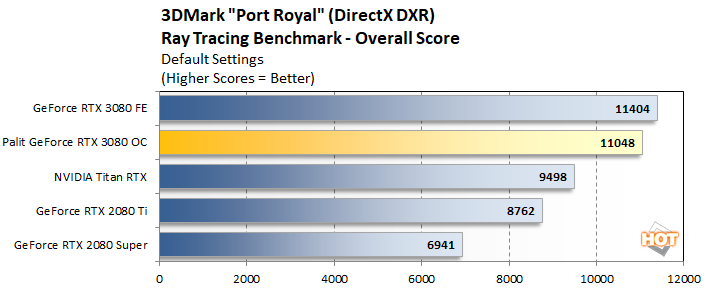
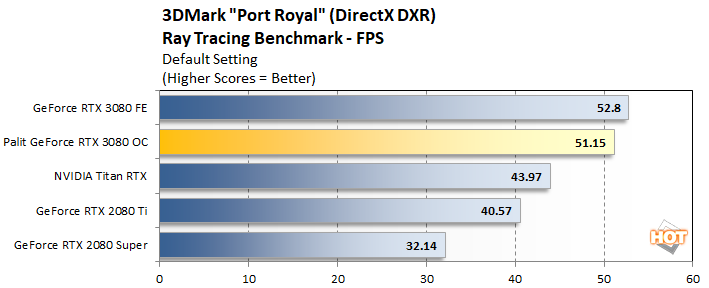
The same held true in the Port Royal test. The Palit GeForce RTX 3080 GamingPro OC couldn't quite catch the FE, but it left everything else in its wake.



